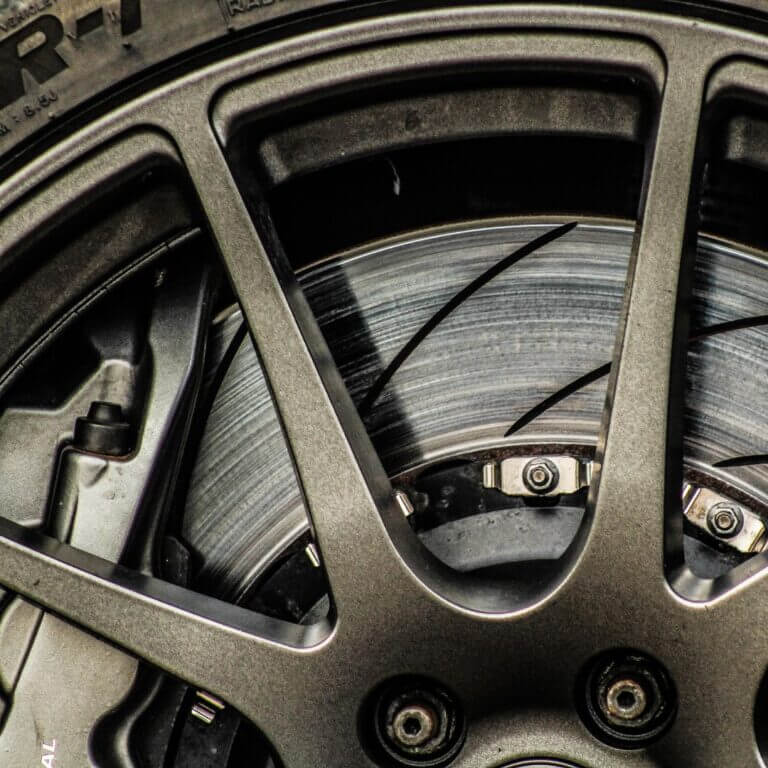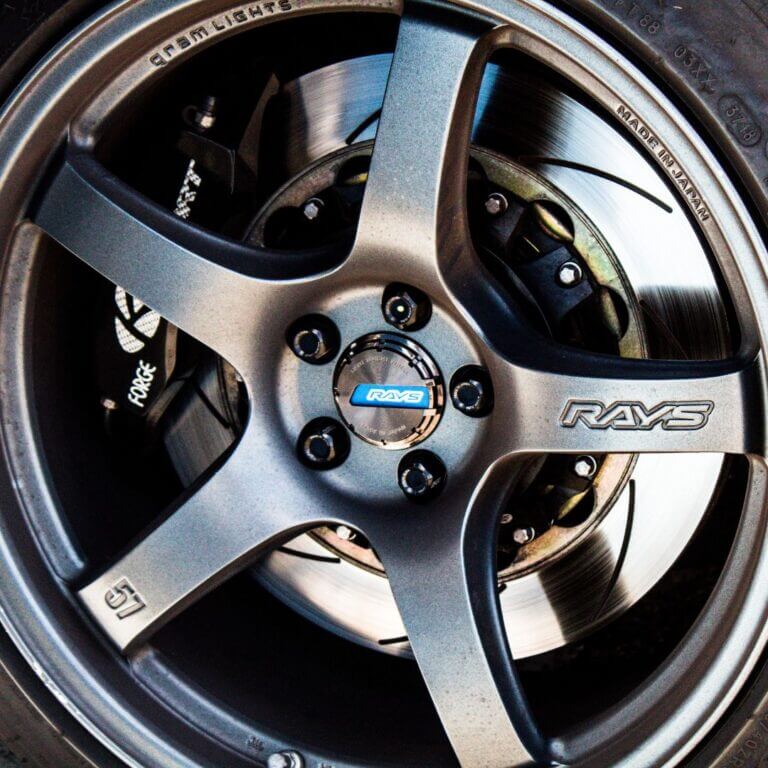What causes juddering brakes?

Initially, it might seem like a minor anomaly. Easily blamed on the brake vibration in steering wheel or a pothole. However, this issue can become increasingly persistent, evolving into a significant concern. Eventually, you might find yourself acknowledging that uncomfortable sensation of brake judder at high speed as your car exhibits a clear case of juddering brakes. It’s a problem that shouldn’t be ignored.
Find car mechanic near me.
Post a job for free
What is brake juddering
Understanding brake juddering is crucial before rushing to purchase new discs and pads online. This article aims to enhance your knowledge about this issue and how to tackle it effectively. Juddering brakes, especially noticeable at certain speeds and pressures, can undermine a driver’s confidence by causing unsettling vibrations through the steering wheel and brake pedal.
The problem originates within the braking system and affects all connected suspension components, including the steering arms and column. In severe cases, it can lead to the entire vehicle shaking.
Optimal braking performance depends on a uniform, smooth surface for the pads to contact with each disc rotation. Any inconsistency can lead to brake judder, often felt as brake vibration.
Brake discs endure considerable stress throughout their lifespan, including heat expansion, compressive loads, and centrifugal forces. This wear and tear can lead to brake disc warping, particularly as the disc’s structural integrity degrades over time.
For those intent on maintaining a resilient braking system, investing in premium brake discs and pads from reputable suppliers such as Brembo Brakes is advisable. Such components are designed to withstand the rigours of high-speed braking and minimise the risk of juddering brakes.
What causes brake judder?
Identifying the culprits behind brake judder is essential. Driver habits play a significant role, particularly in automatic vehicles where brakes are often applied only once the vehicle is stationary.
However, this practice can be problematic when stopping from high speeds, as it leaves the brakes exceedingly hot. Consequently, when brake pads are pressed against these overheated discs, the likelihood of warping a common cause of vibrating brakes, increases.
Most modern automatics will have an auto function anyway which helps to avoid this.
Manuel’s are not exempt from this same issue, but that means sticking it in neutral and applying the handbrake. Yes, it does sound like an old driving lesson, but your brakes will be thankful for it.
– Hot and Cold, warping can also occur when the brakes are subjected to extreme and sudden temperature changes. Temperature extremes can lead to brake disc warping, such as when driving through water with heated brakes, exacerbating brake vibration.
– Below minimum thickness, Once a disc has worn below or close to its minimum thickness, this can reduce the compressive strength as it wears.
This reduced thickness also impacts how heat is moderated over the surface of the disc. i.e. a thinner disc is likely to heat up quicker, making them more susceptible to warping and even cracking under high-speed braking.
– Lateral run out, When the disc isn’t running true against the hub, it will create an in balance within a full 360 rotation. This can be caused by several reasons such as dirt and debris sitting behind the brake disc. Loose or worn suspension components, excessively worn wheel bearings or even and over torqued brake disc retaining bolt.
Aftermarket alloy wheels can be designed with different hub details, be sure to check that the alloy wheel face matches up to the brake disc detail. Some manufacturers can supply wheel spacers to alleviate this problem.
– High spots, When a car is parked up idle for long periods, this can cause corrosion between the disc and the pad. You may have noticed this when you set off in your car after leaving it for a long time, there is a mild humming or juddering when braking. Most of the time this can clean off after a few miles.
The worse this corrosion is, the longer it can take for this high spot to disappear and increases the risk of damaging the brake pads.
– Overheating, Excessive amounts of heat created under braking can lead to hot spots and eventually distort the disc itself.
Look out for localised blue heat spots, if these appear just replace the whole set of pads and discs.
– Disc thickness variation (DTV), If there is a slight variation in the thickness around the disc this can cause brake juddering.
For those keen on delving deeper into maintaining smooth and reliable brakes, and avoiding the disconcerting sensation of juddering brakes, resources such as Brake & Front End offer extensive guidance.

What can I do about it
Bed in your brakes correctly
Dealing with brake judder begins with correctly bedding in your brakes, a crucial step often overlooked. Strictly follow the manufacturer’s bedding in guidelines to ensure the brake material establishes a proper and even contact surface. The general advice is to avoid hard braking during the initial 150 miles after new brakes are installed, promoting the longevity and effectiveness of your brake pads and discs.
When integrating aftermarket components, such as performance brake discs or pads, confirm their full compatibility with your vehicle to prevent brake vibration issues. It’s also vital to manage the heat cycle of your brakes carefully; for instance, avoid excessive braking on steep descents like Alpine roads to prevent overheating, which can lead to brake disc warping.
Don’t create excess heat without allowing the brakes to cool down efficiently.
In situations requiring a sudden stop, such as approaching traffic lights, refrain from continuous pressure on the brake pedal. Instead, utilise the handbrake or electronic brake to mitigate heat build up and reduce the risk of brake pedal vibration.
For a comprehensive guide on the brake bed-in procedure, including how to prevent brake pedal pulsation and maintain optimal brake performance, resources like AutoShack offer valuable insights. Their step by step instructions on bedding in new brake pads and discs, along with additional maintenance tips, are essential for any car owner looking to enhance their vehicle’s braking reliability.
Conclusion
Gaining an understanding of what causes brake juddering can help a long way in preventing this confidence shattering problem.
It’s true that brake juddering often doesn’t point to a singular problem. It requires a keen eye for diagnosis. In cases where the issue isn’t immediately apparent, like distinct blue heat spots on the discs, you may need to delve deeper using tools like a DTI gauge to check for disc thickness variation (DTV) or lateral run out that might not be visible at first glance.
Neglecting your vehicle’s braking system is never an option, as compromised brakes can significantly affect driving safety. If you’re uncertain or pondering ‘Is brake judder dangerous?’ the unequivocal answer is yes. In such instances, seeking the expertise of a qualified mechanic is strongly advised.
Particularly for high performance cars, replacing brake discs and pads can be costly. Therefore, it’s critical to diagnose accurately and address the fundamental issue causing brake judder, ensuring you don’t face repetitive replacements and additional expenses.
Prevention, thorough inspection, and correct maintenance are your best defences against brake vibration and its associated troubles.
Need help with your brakes?
Post a job for free
Automotive Wheel Refurbishment
Automotive Upholstery and trimming
Automotive Fabricator
Automotive Suspension Alignment
Automotive Carbon Composite
Automotive Coach Builder
Race car Data Engineer
Engine Builder
Automotive Fibreglass Composite
Automotive Dyno Technician
Automotive Gearbox Specialist
Automotive Transportation
Automotive Electrician
Automotive Turbo Specialist